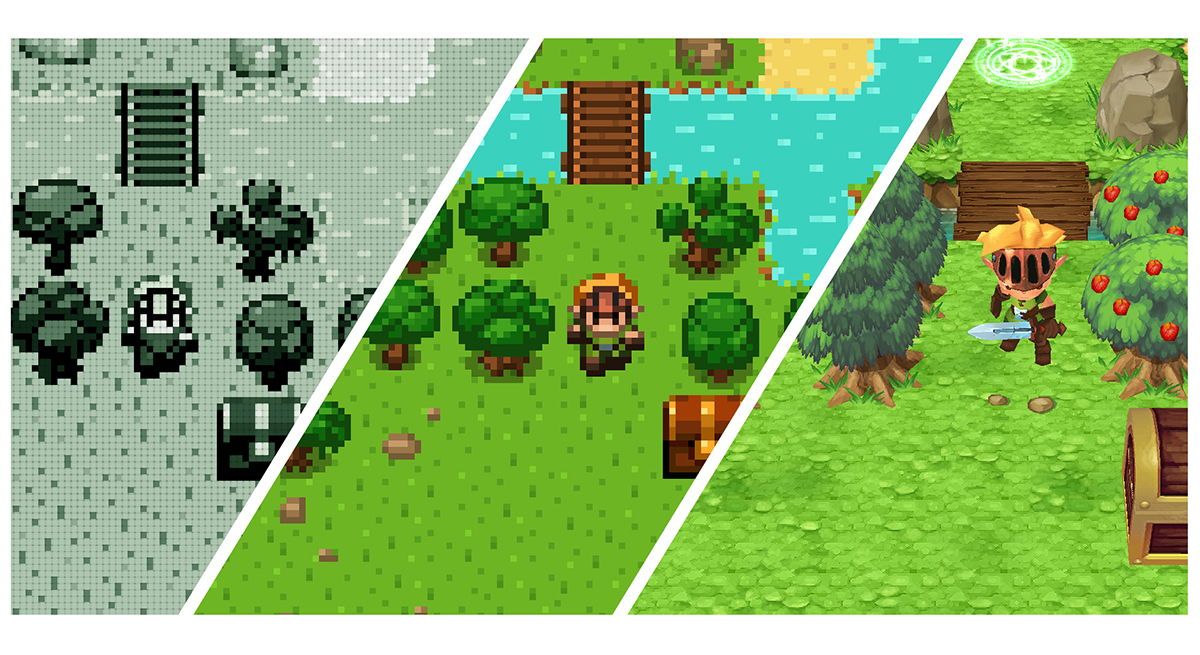I've had a recommendation to think about creating a digital game project as a tool for my study of digital game aesthetics and spatiality. This would be similar to my other project exploring the history of virtual navigation in space, Traversing Virtual Dimensions, the inspiration for this blog's title.
This new research project would take the form of a simple digital game or several games. The user would be able to change the form of a game's spatial structure and projection dynamically, yet the core mechanics and spatial extents of the environment would remain the same. Such a project would ideally require several different methods of player navigation, so adapting my earlier work in Traversing Virtual Dimensions would be a good start. This would serve as a good testbed for exploring various spatial paradigms that I theorize are a way of understanding digital game styles across genres and technological platforms.
Eventually, such a tool can be useful for myself and others in research for A/B testing user experience with different spatial arrangements.
This page serves as an exploration of three similar projects that have been created by others.
Morf (Solarski Studio, 2011)
 |
| Changing the environment shape in Morf. |
Morf was created as an exercise in understanding digital game aesthetics by exploring changes in the overall shape of an environment (in the above image, from "round" to "sharp") and how that changes the player's experience. Chris Solarski, the game's creator describes the project in his 2013 Game Developer feature, "The Aesthetics of Game Art and Game Design."
Morf is a simple browser-based game that I developed to explore the emotional links between character and environment shapes. You, the player, must guide a round character through two environments -- one round, and the latter, sharp. The surprise awaiting players is that, technically, both environments are identical -- it's only the superficial surface graphics that change.
Solarski noted the emotional changes in the different experiences of playing in visual harmony with one's surroundings (round character in round world) contrasted with that of playing in dissonance with one's surroundings (round character in sharp world). Players, especially non-gamers, showed a particularly heightened emotional response to the sharp world, which felt threatening and dangerous.
The game was created in Flash (R.I.P.) and is long gone from Solaski's web page where I played it years ago. Replaying the game required finding the Morf swf file on the Internet Archive, installing Adobe Flash Player debugger software, and finally running the swf file locally. Morf's different projected worlds are experienced in sequence, which is an effective tool for Solarski's purposes (you may not even notice that the two worlds are identical at first). For my purposes, I want to create a project where the game world's projection can be changed dynamically while playing.
Evoland (Shiro Games, 2013)
 |
| Evolution of the retail game through the course of gameplay. |
Evoland started out as the winning entry for the Ludum Dare 24 game jam in 2012, which had a theme of "evolution." Developer Nicolas Cannasse refined the game into a commercial release in 2013, followed by a commercial sequel in 2015. Here is a description of the commercial game from the game's website:
Evoland is a journey through the history of action/adventure gaming, allowing you to unlock new technologies, gameplay systems and graphic upgrades as you progress through the game. Inspired by many cult series that have left their mark in the RPG video gaming culture, Evoland takes you from monochrome to full 3D graphics and from active time battles to real time boss fights, all with plenty of humor and references to many classic games.
The game starts as an action-adventure game in the style of early Legend of Zelda games. The game's visuals run the course of inspiration from Game Boy, NES, SNES (like Mode 7 style overworld environment), N64, and Sony PlayStation. Graphics, sound effects, movement controls, and game mechanics all "evolve" as the player continues their adventure. Some challenges require shifting perspective from 2-D to 3-D and back in order to solve them.
My study is on virtual spatiality, not graphics, although the two topics are corelated (most virtual spaces use graphic projection as a primary interface). I noticed examples of frame mobility early in the game, formal elements I define in my "Taxonomy of Virtual Spaces" (Rowe, unpublished). At first, Evoland uses a single fixed screen. The game quickly evolves with what it calls "basic scrolling," the game jam version has tile scrolling while the commercial version has discrete (or "page-flip") mobility as the player's view pans across the environment. Soon thereafter, the player gains smooth scrolling and primarily stays with that framing device. The game does return to discrete frame mobility when the game evolves to pre-rendered backgrounds in town with 3-D characters, much like Final Fantasy VII.
There are a few other games with similar "evolution through game graphics history" mechanics, such as High Strangeness, Upgrade Complete, and Genetos.
"Measuring How Game Feel is Influenced by the Player Avatar's Acceleration and Deceleration: Using a 2D Platformer to Describe Players' Perception of Controls in Videogames" (Gustav Dahl and Martin Kraus, 2015)
 |
| "Players control a rolling ball. Their task is to collect three stars." (Dahl and Kraus, 2015) |
I've written about this game before when I reviewed literature about jumping in games. Dahl and Kraus developed a simple 2-D side-scrolling platformer game where the player controls a soccer ball rolling and jumping through a game environment. This is very similar to my project needs, except that I would make the spatial visuals dynamic as opposed to the jumping mechanic.



